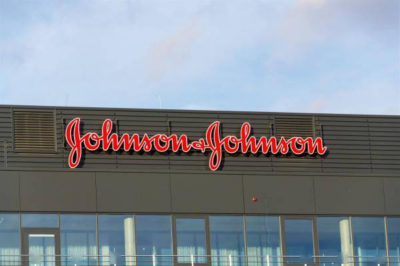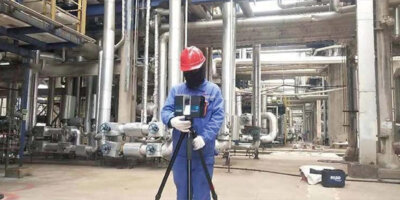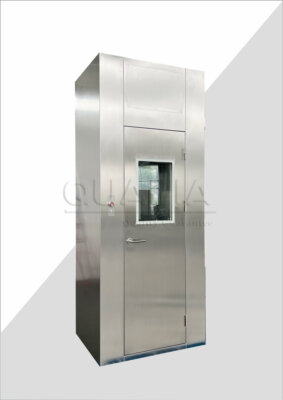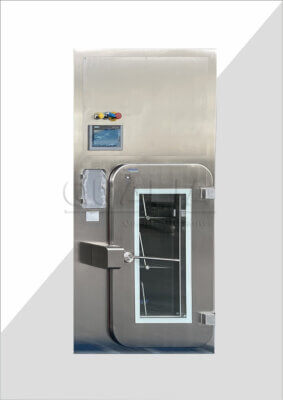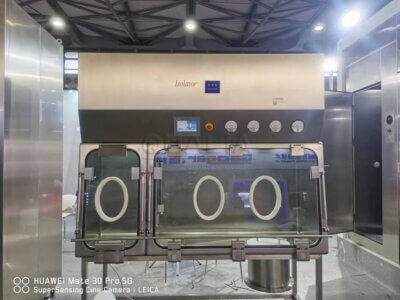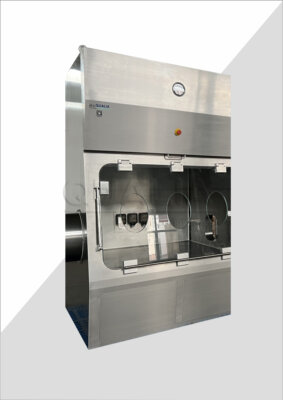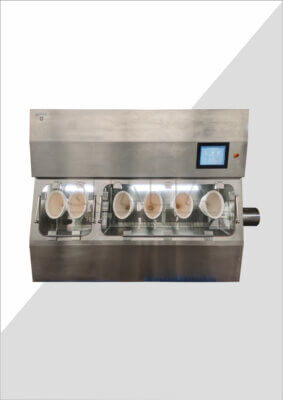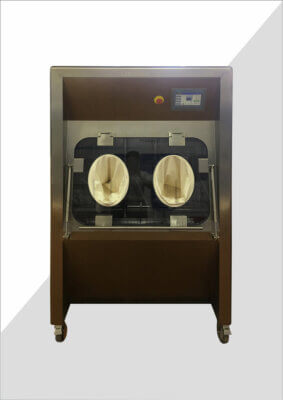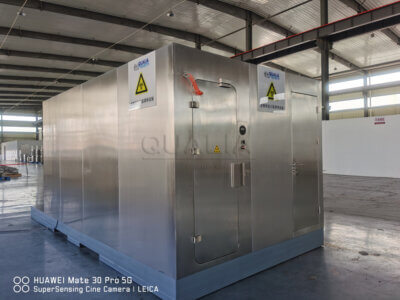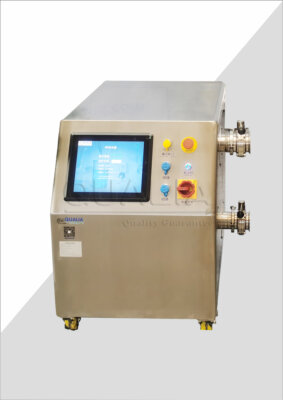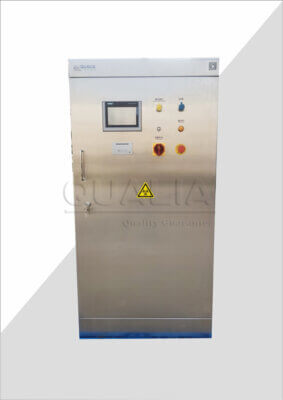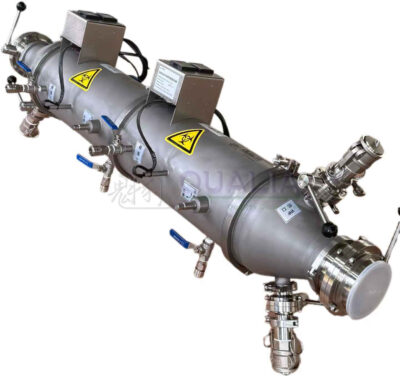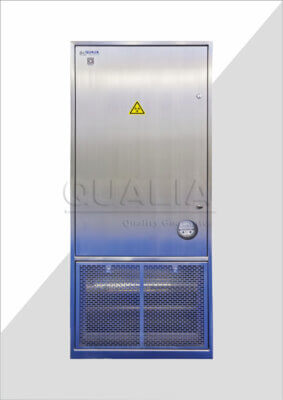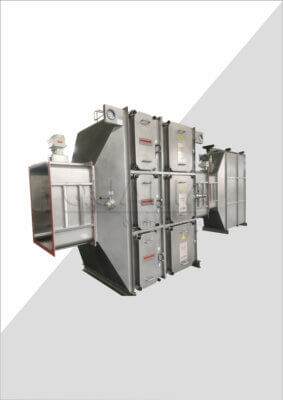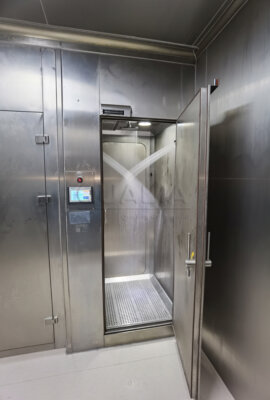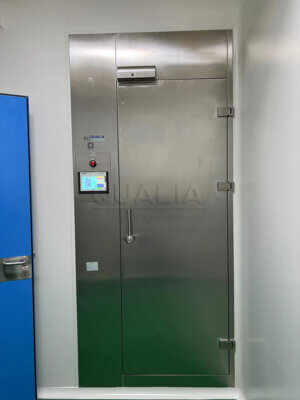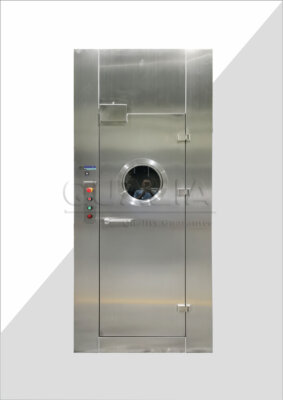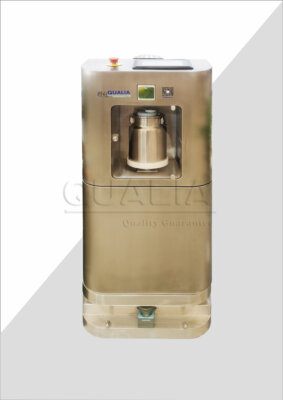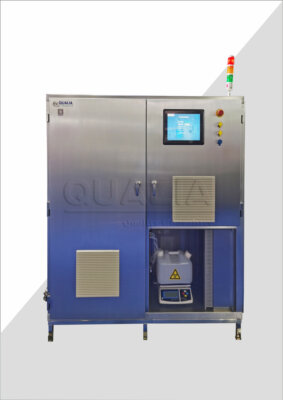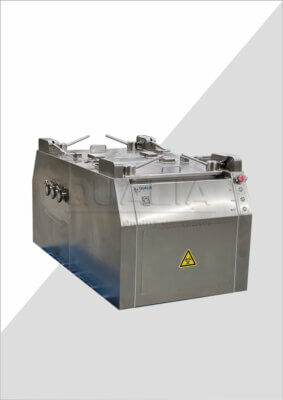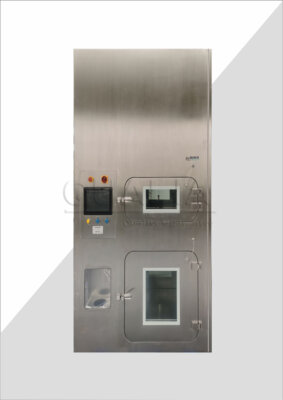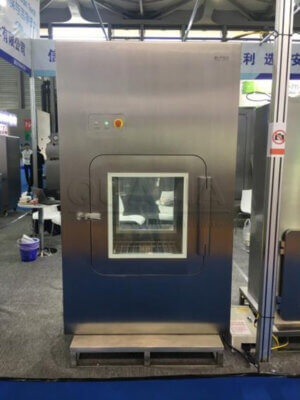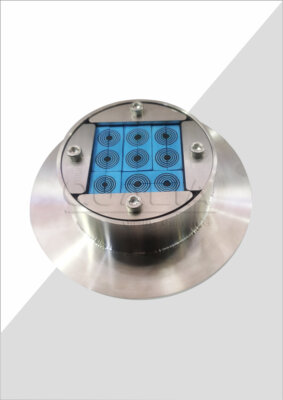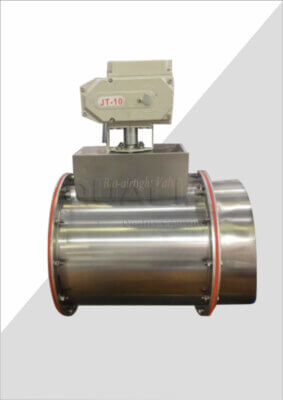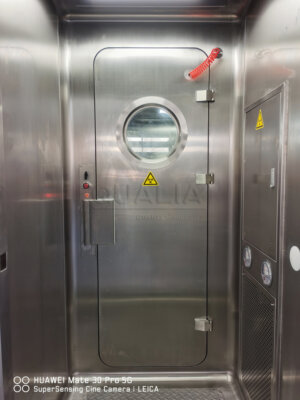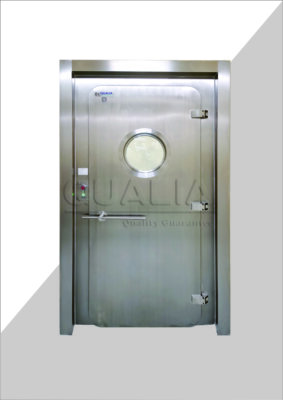In today’s demanding industrial environments, maintaining precise environmental control while ensuring operational efficiency presents complex challenges. Facilities handling sensitive materials, hazardous substances, or requiring strict contamination control face the constant struggle of balancing accessibility with containment integrity. Traditional door sealing systems often fall short when rapid transitions between different pressure zones are required, leading to compromised environmental control, increased energy consumption, and potential safety risks.
The consequences of inadequate door sealing extend far beyond simple air leakage. In pharmaceutical manufacturing, poor containment can result in costly batch contamination, regulatory violations, and compromised product quality. Research facilities may experience cross-contamination between clean and controlled environments, while energy costs escalate due to HVAC systems working overtime to maintain desired conditions. These failures don’t just impact operational efficiency—they can jeopardize entire projects and regulatory compliance.
Pneumatic APR door seal technology emerges as a sophisticated solution addressing these critical challenges. This article explores the technical principles, practical applications, and strategic advantages of APR (Automatic Pressure Relief) systems, providing industry professionals with comprehensive insights into selecting, implementing, and optimizing these advanced sealing solutions for their specific operational requirements.
What is Pneumatic APR Door Seal Technology?
Pneumatic APR door seal technology represents a breakthrough in automated environmental control systems, combining precision engineering with intelligent pressure management. At its core, this technology utilizes compressed air systems to create dynamic sealing barriers that automatically adjust to changing pressure differentials while maintaining optimal containment performance.
The “APR” designation stands for Automatic Pressure Relief, indicating the system’s ability to respond instantaneously to pressure changes without manual intervention. Unlike traditional mechanical seals that rely on static compression, pneumatic APR door systems create dynamic pressure barriers that adapt to operational conditions in real-time.
Core Components and Working Principles
APR door seal technology explained through its fundamental components reveals a sophisticated integration of pneumatic actuators, pressure sensors, and control algorithms. The primary sealing element consists of inflatable gaskets manufactured from specialized elastomeric compounds, designed to withstand repeated compression cycles while maintaining chemical resistance.
The pneumatic control system includes precision pressure regulators maintaining consistent inflation pressures between 15-25 PSI, depending on application requirements. Digital pressure sensors continuously monitor both seal chamber pressure and ambient conditions, feeding data to programmable logic controllers that execute automatic adjustments within milliseconds.
According to research from the International Association of Contamination Control, pneumatic sealing systems demonstrate 40% better containment performance compared to traditional mechanical seals, with response times under 200 milliseconds for pressure equalization events.
APR System Architecture
The architectural design of APR systems incorporates multiple redundancy layers ensuring consistent performance under varying operational conditions. Primary control circuits manage normal sealing operations, while backup systems activate during emergency scenarios or component maintenance periods.
Industrial door seal technology in APR configurations typically features modular components allowing customization for specific applications. Door frame integration involves precision-machined channels accommodating inflatable seals, while control panels provide both automated operation and manual override capabilities.
Leading manufacturers like QUALIA Bio-Tech have developed integrated systems where pneumatic controls seamlessly interface with building management systems, enabling centralized monitoring and control of multiple door installations throughout a facility.
| Component | Function | Typical Specifications |
|---|---|---|
| Pneumatic Actuator | Seal inflation/deflation | 15-25 PSI operating pressure |
| Pressure Sensor | Real-time monitoring | ±0.1% accuracy |
| Control Module | System automation | <200ms response time |
| Inflatable Gasket | Primary sealing element | 100,000+ cycle life |
How Does Pneumatic Sealing Technology Work?
Pneumatic sealing principles operate on the fundamental concept of creating adjustable pressure barriers that respond dynamically to environmental changes. The system continuously monitors pressure differentials across door thresholds, automatically adjusting seal inflation to maintain optimal containment while preventing excessive resistance during door operation.
The operational sequence begins when sensors detect door approach or activation signals. The control system rapidly deflates seals to minimize opening force, then re-inflates immediately after door closure. This process occurs within seconds, ensuring minimal disruption to containment integrity while maximizing operational efficiency.
Pressure Differential Mechanisms
The sophisticated pressure management system utilizes proportional control valves that modulate seal inflation based on real-time pressure readings. When facility HVAC systems create pressure differentials exceeding 0.1 inches of water column, the APR system automatically adjusts seal compression to maintain equilibrium while preserving containment integrity.
In practice, this means a laboratory experiencing sudden pressure changes due to fume hood operations will see immediate seal adjustments preventing door binding or seal failure. The system maintains constant communication with building pressure sensors, creating a responsive network that anticipates and compensates for environmental fluctuations.
Industry data from pharmaceutical manufacturing facilities shows that apr pneumatic systems reduce door operation force by up to 60% compared to conventional sealing methods, while improving containment effectiveness by 35% during pressure transient events.
Automatic Pressure Relief Systems
The APR functionality represents the most sophisticated aspect of pneumatic door seal technology. Advanced algorithms continuously calculate optimal seal inflation levels based on multiple input parameters including ambient pressure, door usage frequency, and contamination risk levels.
During emergency scenarios, such as fire alarm activation or power failures, the system automatically deflates all seals to ensure unobstructed egress. Battery backup systems maintain control functionality for up to 4 hours, while manual override mechanisms provide failsafe operation independent of electrical systems.
“The integration of intelligent pressure relief systems has revolutionized our facility’s operational efficiency,” notes Dr. Sarah Chen, Director of Facilities Engineering at a leading pharmaceutical manufacturer. “We’ve seen 25% reduction in maintenance requirements and virtually eliminated pressure-related door failures.”
What Are the Key Advantages of APR Door Seal Technology?
The implementation of door sealing innovation through APR systems delivers measurable benefits across multiple operational dimensions. Primary advantages include enhanced containment performance, reduced energy consumption, and improved operational reliability compared to traditional sealing methods.
Quantitative analysis from recent installations demonstrates average energy savings of 20-30% in HVAC operating costs, attributed to improved sealing efficiency and reduced air leakage. These savings typically offset initial investment costs within 18-24 months, depending on facility size and operational requirements.
Enhanced Containment Performance
APR systems achieve superior containment through dynamic pressure management that adapts to changing environmental conditions. Traditional seals often fail during pressure transients, allowing contamination breaches that compromise facility integrity. Pneumatic systems maintain consistent sealing force regardless of external pressure variations.
Testing conducted by independent laboratories confirms that APR door seals maintain containment effectiveness exceeding 99.5% during normal operations, with degradation of less than 0.1% during high-usage periods. This performance consistency proves particularly valuable in pharmaceutical manufacturing where regulatory compliance demands absolute contamination control.
Case study data from a biotechnology facility implementing APR systems across 15 critical doors showed 40% reduction in contamination incidents and complete elimination of pressure-related access delays over a 12-month evaluation period.
Energy Efficiency Benefits
The dynamic sealing capability of APR systems significantly reduces the workload on HVAC systems by minimizing uncontrolled air exchange. Traditional door seals often create excessive resistance, forcing ventilation systems to work harder to maintain desired pressure differentials.
Apr door seal technology optimizes energy consumption by maintaining minimal sealing force during normal conditions while automatically increasing containment during critical operations. This intelligent modulation reduces average HVAC energy consumption by 22% in typical installations.
| Performance Metric | Traditional Seals | APR Systems | Improvement |
|---|---|---|---|
| Containment Effectiveness | 94.2% | 99.5% | +5.3% |
| Energy Consumption | Baseline | -22% | 22% reduction |
| Door Operation Force | 15-25 lbs | 8-12 lbs | 50% reduction |
Which Industries Benefit Most from Pneumatic APR Systems?
Apr pneumatic systems find optimal application in industries requiring precise environmental control combined with frequent personnel access. Pharmaceutical manufacturing, biotechnology research, semiconductor fabrication, and advanced materials processing represent the primary beneficiaries of this technology.
The critical factor determining APR system suitability involves the intersection of containment requirements and operational accessibility needs. Facilities handling hazardous materials, maintaining sterile environments, or requiring strict contamination control benefit most from the dynamic sealing capabilities.
Pharmaceutical and Biotechnology Applications
Pharmaceutical manufacturing facilities represent the largest adopters of APR door seal technology, driven by stringent regulatory requirements and the high cost of contamination events. FDA guidelines for Good Manufacturing Practices emphasize the importance of maintaining environmental separation between different production areas.
In biotechnology applications, APR systems enable seamless transitions between biosafety levels while maintaining required containment integrity. Research facilities utilizing BSL-2 and BSL-3 protocols particularly benefit from the automatic pressure relief functionality during emergency scenarios.
A recent installation at a major pharmaceutical facility processing oncology compounds demonstrated the technology’s value. The advanced APR door systems reduced containment breaches by 85% while improving workflow efficiency by 30% through reduced door operation resistance.
Cleanroom and Laboratory Environments
Cleanroom operations require maintaining specific particle count levels while accommodating personnel movement and material transfer. APR systems excel in these applications by providing instantaneous seal adjustment that prevents particle infiltration during door operations.
Laboratory environments benefit from the technology’s ability to maintain different pressure zones for various research activities. Chemical analysis laboratories, in particular, value the containment integrity during fume hood operations that create significant pressure fluctuations.
“Implementation of APR door seals transformed our multi-zone laboratory operations,” explains Dr. Michael Rodriguez, Senior Research Director at a leading pharmaceutical company. “We achieved ISO 14644 Class 5 compliance in areas previously struggling to maintain Class 7 standards.”
How to Choose the Right APR Door Seal Technology?
Selecting appropriate pneumatic apr door seal technology requires careful evaluation of operational requirements, environmental conditions, and integration constraints. The decision process should consider factors including pressure differential ranges, usage frequency, chemical compatibility, and maintenance accessibility.
Performance specifications must align with facility requirements while considering future expansion needs. Under-specification leads to premature failure and compromised containment, while over-specification increases costs without proportional benefits.
Performance Specifications to Consider
Key performance parameters include sealing pressure range, response time, cycle life, and chemical compatibility. Standard APR systems operate effectively with pressure differentials up to 2 inches of water column, while specialized configurations accommodate higher pressure applications.
Response time specifications typically range from 100-500 milliseconds depending on system complexity and seal size. Applications requiring rapid door cycling benefit from faster response times, while standard office environments can accommodate longer response periods with corresponding cost savings.
Chemical compatibility becomes critical in pharmaceutical and chemical processing applications. Seal materials must resist degradation from cleaning agents, process chemicals, and sterilization procedures while maintaining long-term performance.
Integration Requirements
Modern APR systems require integration with building management systems, fire safety controls, and access control systems. The complexity of these interfaces influences both initial costs and long-term maintenance requirements.
Power requirements typically include 110-240VAC for control systems and compressed air supply at 80-120 PSI. Facilities lacking adequate compressed air infrastructure must factor additional costs for air compressor installations.
Communication protocols should support standard industrial interfaces including Modbus, Ethernet/IP, and BACnet for seamless integration with existing building automation systems.
What Are the Installation and Maintenance Considerations?
Professional installation of APR door seal systems requires specialized expertise in pneumatic controls, electrical systems, and mechanical integration. The complexity of these installations typically necessitates certified technicians familiar with both the specific product and application requirements.
Installation timelines vary from 2-5 days per door depending on system complexity and facility constraints. Retrofit installations in existing facilities often require additional time for infrastructure modifications and system integration.
Professional Installation Requirements
Proper installation begins with detailed site surveys evaluating door frame conditions, power availability, and compressed air access. Existing door frames may require modification to accommodate pneumatic seal channels and control system mounting.
Electrical installation involves control panel mounting, sensor installation, and integration with building management systems. Compressed air distribution requires properly sized tubing and fittings to ensure adequate flow rates and pressure regulation.
Commissioning procedures include system calibration, performance verification, and operator training. These critical steps ensure optimal performance and maximize system longevity.
Preventive Maintenance Protocols
Industrial door seal technology requires systematic maintenance to ensure consistent performance and extended service life. Preventive maintenance schedules typically include monthly visual inspections, quarterly performance testing, and annual component replacement.
Seal inflation pressure should be verified monthly using calibrated pressure gauges. Control system filters require quarterly replacement to prevent contamination-related failures. Annual maintenance includes comprehensive system testing and seal condition assessment.
“Proper maintenance scheduling has proven essential for our APR systems,” notes James Thompson, Facilities Manager at a biotechnology facility. “We’ve achieved 99.2% uptime over three years through consistent preventive maintenance.”
What Challenges Should You Expect with APR Door Seals?
While APR door seal technology offers significant advantages, implementation challenges require careful consideration during planning phases. Understanding these limitations enables better decision-making and more successful installations.
Technical Limitations
Pneumatic systems require reliable compressed air supply and electrical power for optimal operation. Facilities with inadequate infrastructure may face significant additional costs for system upgrades. Power failures disable automatic functions, though manual override capabilities maintain basic operation.
Seal life expectancy typically ranges from 3-7 years depending on usage frequency and environmental conditions. Harsh chemical environments or excessive cycling may reduce service life, requiring more frequent replacements and higher maintenance costs.
System complexity can present challenges for facilities lacking skilled maintenance personnel. While basic operations remain straightforward, troubleshooting and repairs often require specialized training and equipment.
Cost and Complexity Factors
Initial investment costs for APR systems typically exceed traditional sealing methods by 200-400%. However, operational savings through reduced energy consumption and improved containment effectiveness often justify the premium over the system’s operational life.
Installation complexity increases project costs and scheduling challenges. Facilities requiring multiple door installations may benefit from phased implementation approaches to minimize operational disruption.
The sophisticated nature of APR systems requires ongoing maintenance contracts or trained internal personnel. These ongoing costs should be factored into total cost of ownership calculations when evaluating system options.
Conclusion
Pneumatic APR door seal technology represents a significant advancement in environmental control systems, offering dynamic sealing capabilities that adapt to changing operational conditions while maintaining superior containment performance. The technology’s ability to automatically adjust seal pressure based on real-time environmental data provides measurable benefits in energy efficiency, operational reliability, and contamination control.
Key value propositions include enhanced containment effectiveness exceeding 99.5%, energy savings of 20-30% through optimized HVAC operation, reduced door operation forces improving workplace ergonomics, and intelligent pressure management preventing system failures during operational transients. These advantages make APR systems particularly valuable for pharmaceutical manufacturing, biotechnology research, and cleanroom operations where environmental control critically impacts product quality and regulatory compliance.
For facilities considering APR implementation, begin with comprehensive site assessments evaluating current sealing performance, energy consumption patterns, and operational workflow requirements. Consider starting with pilot installations in critical areas to demonstrate value before facility-wide deployment. Ensure adequate infrastructure exists for compressed air supply and electrical integration, while planning for ongoing maintenance requirements and staff training needs.
The future of door sealing technology continues evolving toward greater intelligence and integration with smart building systems. Emerging developments include predictive maintenance algorithms, enhanced sensor integration, and improved energy efficiency through advanced control strategies. As regulatory requirements become increasingly stringent and energy costs continue rising, APR door seal technology positioned as an essential component of modern facility environmental control systems.
What specific challenges does your facility face with current door sealing systems, and how might the dynamic capabilities of APR technology address these operational requirements? The investment in professional APR door seal solutions offers a pathway to enhanced operational efficiency and regulatory compliance in today’s demanding industrial environments.
Frequently Asked Questions
Q: What is Pneumatic APR Door Seal Technology?
A: Pneumatic APR door seal technology uses an inflatable seal that inflates with compressed air to create an airtight barrier around the doorframe. This seal provides exceptional containment by pressing against the doorframe to prevent air leakage, especially in high-containment areas like laboratories and cleanrooms. The inflation and deflation of the seal happen quickly, ensuring the door maintains a tight seal during use.
Q: How does Pneumatic APR Door Seal Technology differ from mechanical seal doors?
A: Unlike mechanical seal doors that use manual compression and a raised threshold gasket, pneumatic APR doors use an air-inflated seal that wraps around the door perimeter and seals flush with the floor. This design reduces trip hazards and is better suited for high-traffic or wheeled equipment environments. Pneumatic seals achieve very low leakage and respond automatically to pressure changes, making them ideal for highly controlled environments.
Q: What are the main benefits of using Pneumatic APR Door Seal Technology?
A: Key benefits include:
- Superior airtight containment, resisting pressure differences up to 8″ water gauge or more
- Quick inflation and deflation cycles (around 5 seconds) for efficient operation
- Flush doorframe design eliminating trip hazards
- Automatic pressure control with overpressure and underpressure protection
- Emergency deflation valves for safe escape during power outages
- Durable materials such as stainless steel and high-density EPDM seals ensure long-lasting performance
Q: In what environments is Pneumatic APR Door Seal Technology most commonly used?
A: This technology is primarily used in high containment facilities that require strict air leakage control, including:
- Biosafety Level 3 and 4 laboratories (BSL3, BSL4, and agriculture labs)
- Pharmaceutical and medical cleanrooms
- Hospitals and containment-controlled facilities where air contamination risks are high
- Laboratories that undergo frequent fumigation and decontamination processes
Q: How is the pneumatic seal controlled and maintained?
A: The pneumatic seal system typically integrates with an existing compressed air supply and includes control wiring for door status and air pressure alarms. It automatically inflates when the door closes and deflates when opened. The system has safeguards to maintain pressure within safe limits and includes emergency deflation valves on both sides of the door for escape if needed. Regular maintenance involves checking the inflation system and inspecting the seal material for wear.
Q: Can Pneumatic APR Door Seal Technology be customized for different door materials or applications?
A: Yes, pneumatic seal APR doors can be constructed using various materials including polished stainless steel, powder-coated steel, aluminum, or phenolic resin, depending on the application requirements. The frames can be installed on different wall types such as cast concrete, stud partitions, or block walls. They can also be configured as single doors or in interlocking multiple door systems for complex containment needs.
External Resources
- Pneumatic Seal APR Doors – BioSafe Tech by QUALIA – In-depth overview of pneumatic APR door seal technology, discussing its working principle, material specifications, emergency features, and pressure protection mechanisms.
- Pneumatic Seal APR Doors | Presray – Details about pneumatic seal APR doors, their airtight capabilities, applications in high-containment areas, and operational advantages for labs and cleanrooms.
- High Containment APR Inflatable Seal Doors | PBSC – Explains the use of compressed air-operated inflatable seals in high-containment doors and compares different door and seal options for specialized environments.
- Pneumatic seal – all information and tips | Kofler-Dichtungen – Provides technical insight into pneumatic sealing concepts, including structural types and dynamic/stationary sealing functions, relevant for understanding the technology.
- Biosafety Airtight Doors: Essential Components for Contamination Control | Youth Filter – Explains advanced sealing mechanisms in biosafety airtight doors, comparing mechanical compression and inflatable pneumatic seals in contamination control.
- Airtight Door Solutions for Cleanrooms and Laboratories | Dortek – Overview of airtight door solutions, including pneumatic seal options, with a focus on applications in cleanrooms and laboratory containment environments.
Related Contents:
- What Are APR Door Pneumatic Seals and How They Work
- Pneumatic Seal APR Doors: Complete Guide to Industrial Applications
- APR Door Sealing Systems | Pneumatic Technology Overview
- Best APR Door Pneumatic Seal Suppliers | Vendor Selection Guide
- Pneumatic APR Door Seals Cost | Pricing Guide | ROI Analysis
- Pneumatic vs. Electric Bio-safety Isolation Dampers
- Advanced Sealing Technologies Expert Insights
- Bio-safety Dampers for Virology Lab Containment
- How to Install a Bio-safety Isolation Damper: 7 Steps

